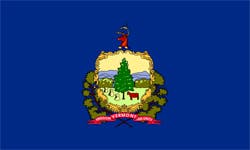To help seniors pay their healthcare costs after retirement, President Johnson signed Medicare into law in 1965. The program did not include prescription drug coverage, though, until Congress passed the Medicare Modernization Act (MMA) in 2003. MMA increased beneficiaries' Medicare plan options, introducing both Part C (Medicare Advantage) and Part D (prescription drug coverage). This page explains Medicare Part D in Vermont.
How do you get Medicare Part D in Vermont?
You have two options for Medicare Part D in Vermont: A standalone Medicare Part D prescription drug plan or a Medicare Advantage Prescription Drug plan (MA-PD).
Original Medicare includes two parts. Part A, hospital insurance, covers inpatient while Part B, medical insurance, covers outpatient services.
Medicare Advantage plans offer the same coverage you have with Original Medicare, but most MA plans offer additional benefits as well. The most common add-ons are fitness programs, prescription drugs, routine vision and dental care, and hearing aids.
You may combine a standalone Part D plan with either Original Medicare or an MA plan that does not include prescription drug coverage. (Around 10 percent of Advantage plans do not include Part D benefits.)
Medicare Advantage Prescription Drug plans combine your Original Medicare and Part D benefits into a single policy.
Please note that you cannot combine a standalone Part D plan with an MA-PD plan.
Who is eligible for Medicare Part D in Vermont?
You become eligible for Medicare Part D in Vermont as soon as you sign up for Medicare Part A and/or Part B. Each plan may also have eligibility requirements. Usually, that just means you have to live in the plan's service area.
If you are a U.S. citizen or permanent legal resident, you will become eligible for Medicare upon turning 65. However, you won't be automatically enrolled in Parts A and B unless you began receiving Social Security benefits at least 4 months before your 65th birthday. Otherwise, you have to apply for Medicare through Social Security.
If you collect Social Security disability benefits for 24 months, you may qualify for Medicare before turning 65. In this case, enrollment in both Parts A and B occurs automatically during your 25th month.
You are never automatically enrolled in a Medicare Part D prescription drug plan, even if enrollment in Parts A and B was automatic.
When can you join in a prescription drug plan in Vermont?
You can only join a Part D prescription drug plan in Vermont during specific times known as enrollment periods.
- Initial Enrollment Period: Your IEP begins 3 months before the month you become eligible for Medicare and lasts for 7 months. For example, if your 65th birthday or 25th month of collecting disability benefits occurs in June, your IEP begins on March 1 and ends on September 30. After you enroll in Part A and/or Part B, you may then sign up for a prescription drug plan.
- General Enrollment Period: If you missed your IEP and you also don't qualify for a Special Enrollment Period (SEP), you can apply for Medicare Part A and/or Part B during General Enrollment from January 1 through March 31. You may then join a prescription drug plan between April 1 and June 30.
- Medicare Annual Enrollment Period: AEP is available to current Medicare beneficiaries from October 15 through December 7. During this time, you can make any change to your Medicare coverage that you need to, including joining a Part D or MA-PD plan.
- Medicare Advantage Open Enrollment Period: From January 1 through March 31, Medicare Advantage enrollees may either switch to a new MA plan or return to Original Medicare. If that change causes you to lose your prescription drug coverage, you may also sign up for a standalone Part D plan.
- Special Enrollment Periods: Special circumstances, like moving to a new address or losing your current coverage, may qualify you for a Special Enrollment Period. Find the full list of qualifying special circumstances on Medicare.gov.
How to compare Medicare Part D plans in Vermont
Medicare contracts with private insurance companies to provide prescription drug plans in Vermont, so coverage and costs may vary widely. To get the best plan for your unique needs, compare your Part D options carefully.
Start by reviewing the plan's drug formulary, which is a list of the medications the plan covers. If it doesn't include one or more of your prescriptions, it probably isn't the right plan for you.
Review the drug tiers next. This indicates what your copayment or coinsurance would be for a particular medication. Drugs on a lower tier cost less than medications on upper tiers do.
In addition to copays or coinsurance, your out-of-pocket costs for Medicare Part D may include an annual deductible and monthly premium. You need to look at all three of these metrics when estimating the cost of a Part D plan.
You may qualify for Extra Help if you have limited income or resources. If you believe you meet the requirements Extra Help but did not receive notification from either Medicare or Social Security, contact your plan provider.
Please note that both Medicare and Social Security only communicate via U.S. mail. If you receive a call from someone claiming to be from Medicare or Social Security, hang up the phone. Then, call the appropriate program (1-800-MEDICARE or 1-800-772-1213) and follow their instructions.
Do you have to have Medicare Part D in Vermont?
No, Medicare Part D is not mandatory in Vermont. However, the Medicare program encourages timely enrollment by penalizing you if you delay signing up for Part D and don't have creditable coverage somewhere else. To be considered creditable, the plan must offer comparable benefits to what you'd get with Medicare Part D and at a similar price. If you go 63 days or more without creditable prescription drug coverage, you face lifelong late penalties when you do finally join a Part D prescription drug plan.

